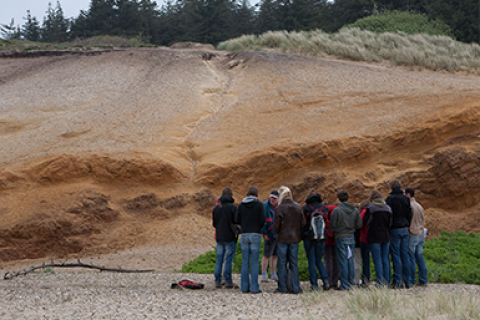Earth interior
Earth, a very dynamic rock

The Earth’s interior and its surface are in a constant process of interaction. Often slowly, on very large time scales, but often visible in catastrophic events like earthquakes and volcanism. And human society changes the Earth’s surface in an even faster pace than natural processes do. We utilise the subsurface for public infrastructure and rapidly exhaust the known mineral and energy resources that have been stored for millions of years in Earth’s interior.
Connecting the interior to the surface
A central theme is quantifying the interaction between deep (mantle) and shallow (crust/surface) processes. Through this, we aim to understand the present-day structure and dynamic state of our planet. Our strong mathematical and physical background, together with excellent laboratories, leads to new imaging and modelling techniques for sustainable use of the subsurface and for mitigation of natural disasters.
Understanding inner-Earth processes
In trying to understand the inner-Earth processes, in strong collaboration with our work in Earth materials, we engage questions such as: How did planet Earth evolve from its early formation until its present-day complexity (and how has that influenced life)? Why is Earth so different from other planets? How do mountain belts and sedimentary basins form and shape? How can we image what’s under our feet, but too deep to reach? How can we sustainably use the (scarce) resources of the Earth (e.g., rare minerals and water)? How and where can we safely use the subsurface, e.g., in the energy transition (H2, geothermal energy, etc.) or for long-term waste storage (CO2, radio-active waste, etc.)?

